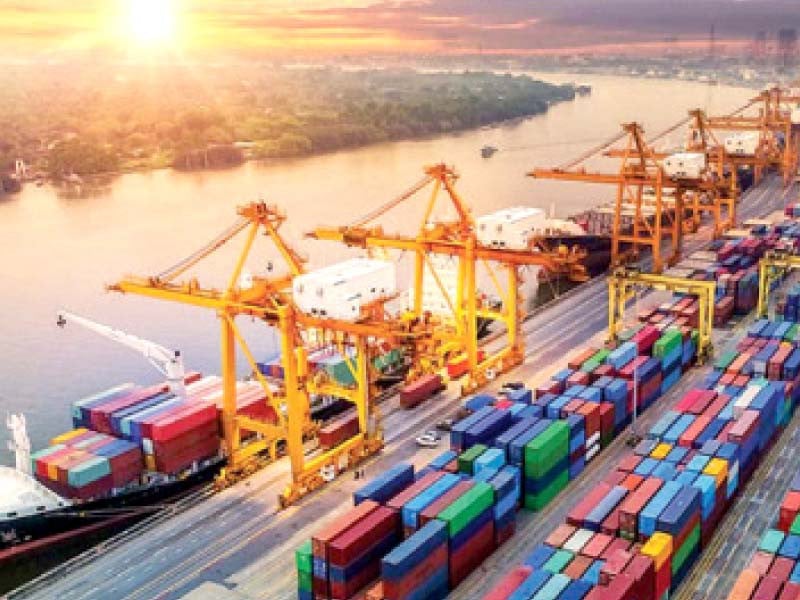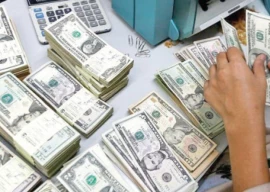
A combination of domestic and external factors has pushed the economy into hot waters.
In terms of some key economic indicators, the economy is in a similar situation as left by the PML-N government in 2018 – a moderate growth rate accompanied by high external and fiscal deficits.
FY18 had closed with trade and current account deficits (CAD) of $37.58 billion (11.4% of gross domestic product – GDP) and $19.89 billion (6.1% of GDP) respectively, and fiscal deficit of 6.5% of GDP.
In the following two years (FY19 and FY20), the CAD was brought down to 4.8% and 1.5% of GDP respectively mainly due to import-compression policies, which induced a reduction in imports, and increase in remittances.
The cuts in external deficit, however, were secured at the expense of overall economic growth. In FY19, GDP growth fell to 2.08% from 5.5% a year earlier. FY20 saw economic contraction of 0.47%.
However, FY21 witnessed both reduction in external deficit and moderate economic expansion. GDP grew 3.9% (the figure was later revised to 5.4% due to the rebasing of national accounts). At the same time, the CAD came down to 0.6% of GDP.
Although imports grew 26%, exports increased 18%, which marked the fastest growth in exports in recent years. Thus, the stage was set for the much-needed economic recovery.
The outgoing government, however, found it difficult to contain fiscal deficit, which increased to 9.1% in FY19 before being reduced to 8.1% in FY20 and further to 7.1% in FY21.
In the first six months of current fiscal year (FY22), the fiscal imbalance reached 2.1% of GDP, which increased to 2.9% at the end of January 2022.
The perpetually high fiscal deficit is understandable, for the reason that more than 75% of the total public expenditure is autonomous (including debt servicing, security-related spending, etc), which means it has to be incurred regardless of the state of economy.
On the other hand, the tax-to-GDP ratio has remained low. From 12.9% in FY18, the share of taxes in GDP fell to 11.8% in FY19 and further to 11.4% in FY20 and 11.1% in FY21.
The current fiscal year, however, has once again witnessed a large CAD building up. In the first eight months of FY22, the CAD shot up to $12 billion compared with $994 million in current account surplus witnessed during the corresponding period of FY21.
Although remittances went up from $18.7 billion to $20.14 billion, the trade deficit increased to $27.28 billion from $16 billion a year earlier.
Despite 28% YoY growth in exports (compared with 2.2% contraction in FY21), imports increased 49.1% (compared with 4.2% growth in FY21).
As per PBS data for the first nine months of FY22 (July-March), exports ($23.35 billion) and imports ($58.88 billion) registered YoY growth of 25% and 49% respectively, thus increasing the trade deficit by 70.7% to $35.53 billion.
As per IMF’s recently released forecasts, during the current year, Pakistan’s economy will grow 4% compared with the 4.8% budgetary target. CAD is projected to reach 5.3%.
Thus, the economy is poised to return to the familiar combination of moderate growth and high external deficit.
Having contracted 9.8% in FY19 and 6.9% in FY20, imports had grown 26.4% in FY21 on the back of revival in the GDP growth momentum. This shows that import compression policies in Pakistan are exceedingly difficult to sustain.
This is mainly due to the composition of imports, which was as follows during FY21: capital goods: 28%, raw material for capital goods: 11%, raw material for consumer goods: 42%, and consumer goods: 19%.
Because of a narrow manufacturing and resource base available for economic use, the country needs to rely on foreign capital goods and raw material to keep the wheels of economy moving.
The sharp upward movements in international commodity prices during the previous and current financial years added significantly to the import bill. The ongoing Russia-Ukraine conflict has pushed the accelerator on the global energy price hike.
Petroleum products are one of the biggest items in our import basket. In 2020-21, the petroleum products contributed $11.36 billion, or 20.14%, to the country’s total import bill.
In the first eight months of current financial year, the petroleum imports amounted to $11 billion compared with $5.7 billion during the corresponding period of FY21, thus registering 93% YoY increase. Import payments are difficult to compress in these circumstances.
In Pakistan, the export-to-GDP ratio is only 8% compared with import-to-GDP ratio of 19%. This means that even if export growth matches or even surpasses import growth, in value terms export revenue will continue to fall well short of import payments, thus resulting in a substantial trade deficit and CAD.
Since exports are the difference between domestic production and domestic consumption, the presence of a large and growing population, 64% of which is under the age of 29 and thus in high consumption bracket, is a drag on export growth.
However, a bigger factor is the narrow manufacturing base and lack of competitiveness of exporting enterprises.
Because the domestic market is highly protected and not well regulated in terms of product standards and quality, our exporters by and large find it difficult to compete internationally. Domestic commerce reforms are essential for a sustained increase in exports.
The writer is an Islamabad-based columnist
Published in The Express Tribune, April 25th, 2022.
Like Business on Facebook, follow @TribuneBiz on Twitter to stay informed and join in the conversation.




1725612926-0/Tribune-Pic-(8)1725612926-0-165x106.webp)













COMMENTS (1)
Comments are moderated and generally will be posted if they are on-topic and not abusive.
For more information, please see our Comments FAQ